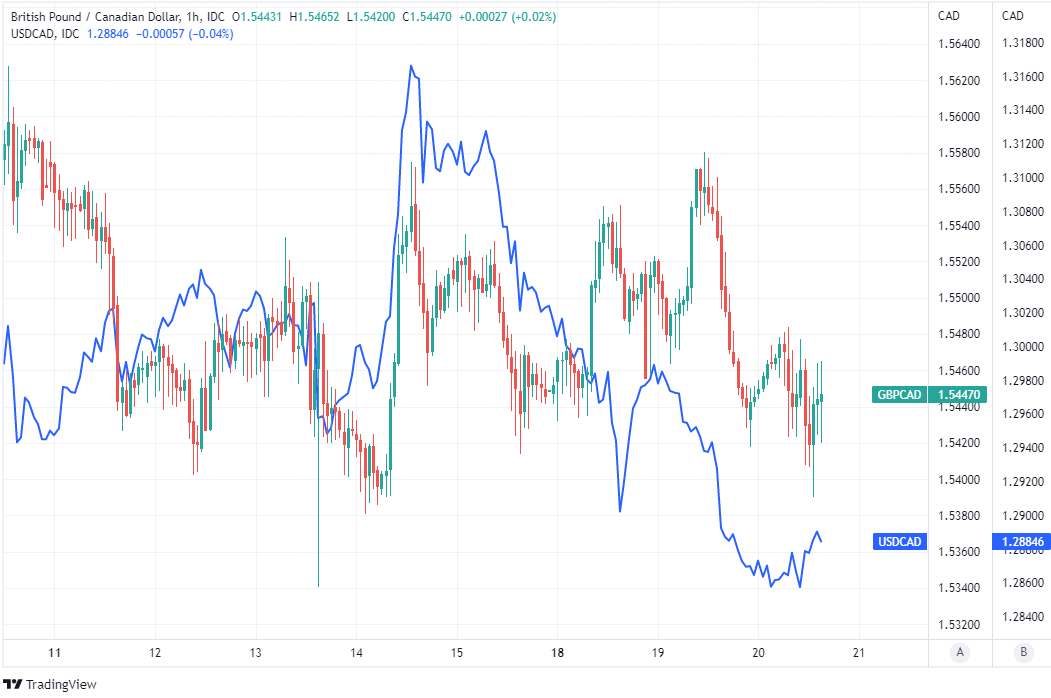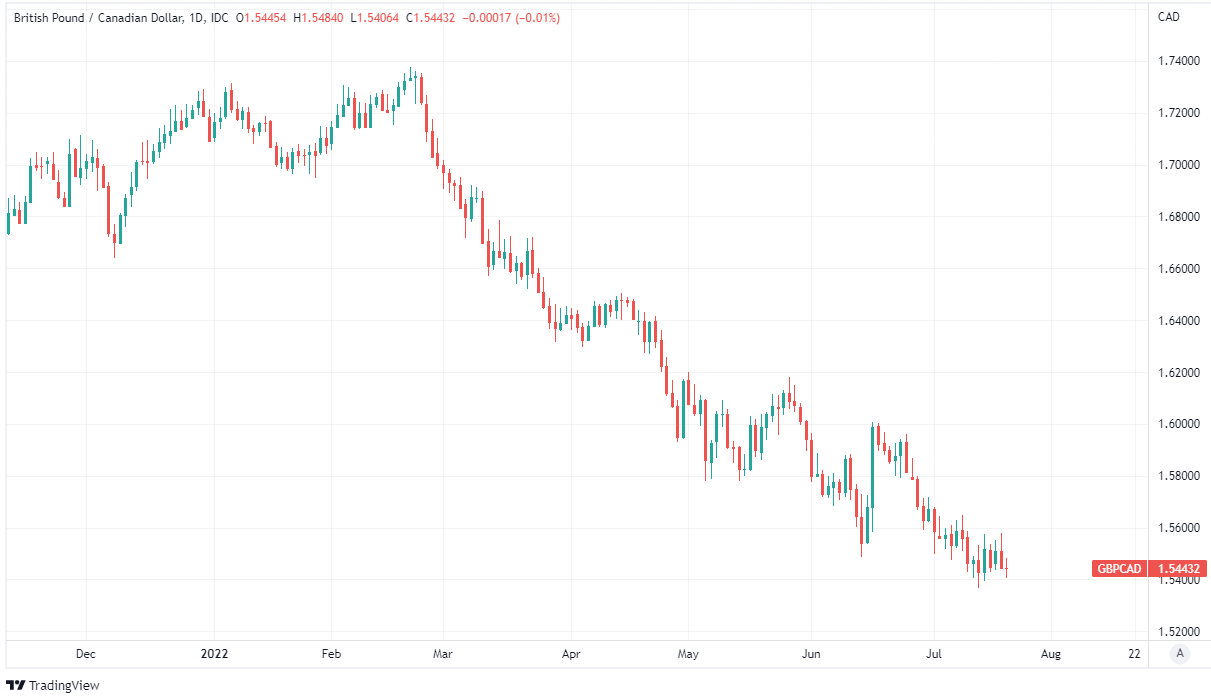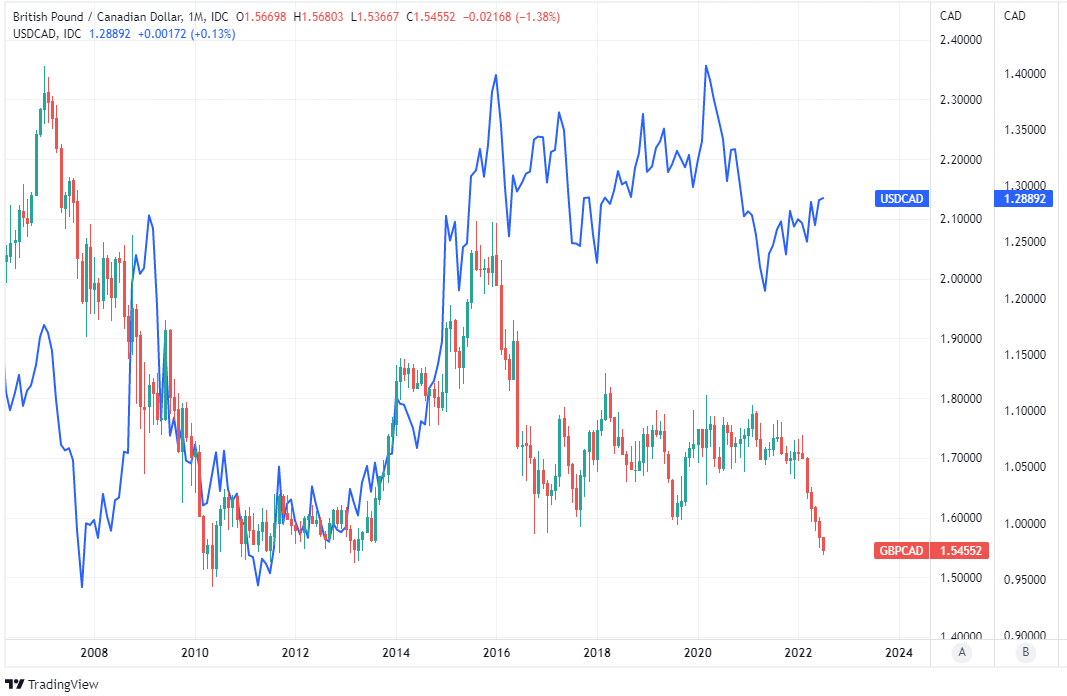Canadian Dollar Easing Up On “Oversold” GBP/CAD but Recovery Some Way Off
- Written by: James Skinner
-
“Unless or until that happens, minor GBP gains are liable to attract renewed selling pressure,” - Juan Manuel Herrera, Scotiabank.

Image © Adobe Stock
The Canadian Dollar cooled its heels in the midweek session, enabling an oversold GBP/CAD exchange rate to stabilise near some of its lowest levels for a decade, although Scotiabank says that Sterling is still some way off from escaping the clutches of short sellers.
Canada’s Dollar came off the boil on Wednesday after Statistics Canada inflation figures undershot market expectations for another notable escalation of price pressures during June.
Inflation rose from an annual 7.7% to 8.1% last month against a consensus that had looked for an 8.4% pace of price growth while Canada’s various measures of core inflation climbed much less than that.
“The acceleration in June was mainly due to higher prices for gasoline, however, price increases remained broad-based with seven of eight major components rising by 3% or more,” Statistics Canada also said.
“On average, prices rose faster than hourly wages, which increased 5.2% in the 12 months to June,” Statistics Canada also said.
Canada’s inflation rate rose by only 10 basis points to reach 5.3% last month when food and energy goods are excluded from the basket under the microscope, while the average of the three Bank of Canada (BoC) measures of trimmed mean inflation edged up from 4.9% to 5%.
 Above: Pound to Canadian Dollar rate shown at hourly intervals alongside USD/CAD.
Above: Pound to Canadian Dollar rate shown at hourly intervals alongside USD/CAD.
“This reading will be a welcome relief for the Bank of Canada since it is below its new forecast released last week, especially given the fall in gasoline prices,” says Karyne Charbonneau, an economist at CIBC Capital Markets.
Each of the inflation rates was still at least twice, if not three times the 2% level targeted by the Bank of Canada although the much lesser strength of domestic inflation pressure left financial markets with few, if any grounds to expect much from the BoC when it comes to interest rate policy.
GBP/CAD had been trading below 1.54 and near to last Wednesday’s lows, which were also Sterling’s weakest level since May 2013, before recovering some of its earlier lost ground in the wake of this Wednesday’s release.
“GBPCAD is oversold. That is about as much as we can say for the depressed GBP at this point,” says Juan Manuel Herrera, a strategist at Scotiabank.
“The lack of follow through on the downside after breaking the June lows plus the moderation on the daily DMI signals suggest bear pressure on the pound is easing a little. But there is no definitive sign of a bullish reversal developing here at this point,” Herrera also said on Tuesday.
The rub for GBP/CAD, however, is that it’s sharp downtrend of 2022 could continue to draw interest from short sellers for as long as it remains trapped below the 1.58 handle and there were few, if any signs on Wednesday of a recovery that far being in the pipeline for the near future.

Above: Pound to Canadian Dollar rate shown at daily intervals.
“Unless or until that happens, minor GBP gains are liable to attract renewed selling pressure,” Herrera and colleagues said.
Neither Sterling nor GBP/CAD benefited this week from the employment and inflation figures released in the UK where the core inflation rate fell from 5.9% to 5.8% even as the overall pace of price growth climbed from 9.1% to 9.4%.
Divergence between the UK’s two inflation rates denotes an absence of the “second round effects” that might be likely to catalyse a more aggressive interest rate response from the BoE while Tuesday’s wage growth numbers were also consistent with limited, if any second round effects.
That leaves a question mark over the likely size of the next move from the Bank of England in early August, which has recently warned that it would lift Bank Rate in larger increments and at a faster pace if it emerges that energy and food inflation is spreading into other parts of the economy.
“We now expect UK CPI inflation to peak at nearly 12% in October, and to remain much higher in 2023. The higher forecast reflects a combination of surging energy futures prices, a spike in oil refinery margins that is likely to keep UK petrol prices high, and a weaker pound,” writes Andrew Goodwin, chief UK economist at Oxford Economics, in a Wednesday research briefing.
“The prospect of inflation remaining higher for longer is likely to reinforce their determination to push ahead with rate hikes, despite growing evidence that activity is faltering. But with high inflation still largely due to factors outside of their control, we think further rate hikes would be an overreaction,” he added.
 Above: Pound to Canadian Dollar rate shown at monthly intervals alongside USD/CAD.
Above: Pound to Canadian Dollar rate shown at monthly intervals alongside USD/CAD.











